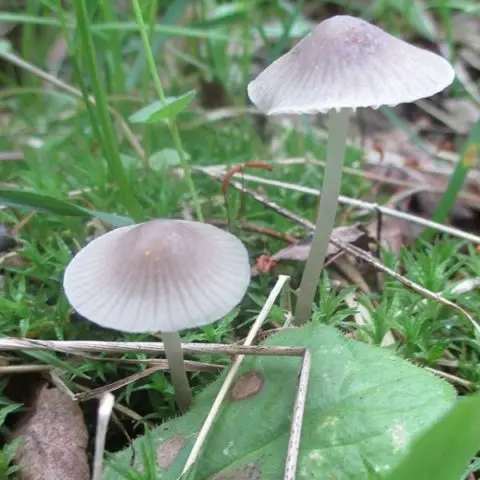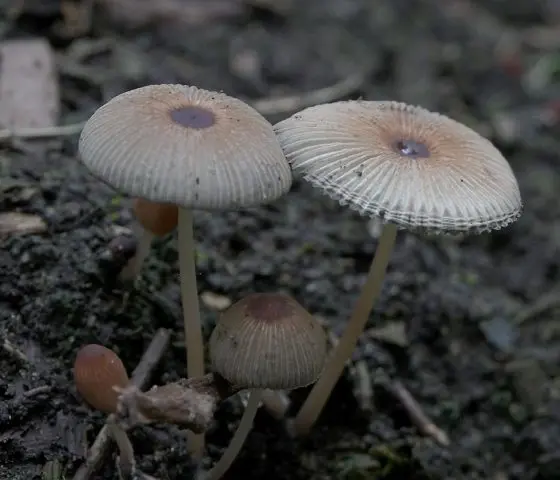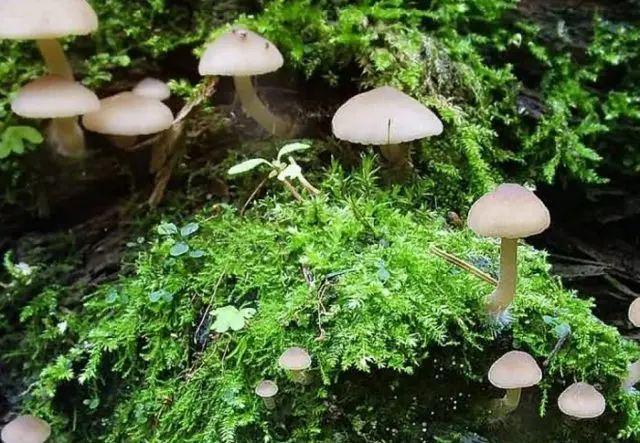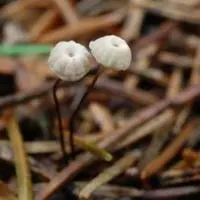Contents
In nature, there are 25 species of dung beetles. Among them there are snow-white, white, hairy-legged, domestic, woodpecker, flickering, ordinary. Dung beetle is one of the most inconspicuous species. Now it belongs to the Psatirellaceae family. Its second name is common dung beetle. It has an unattractive appearance, dwarf size. Therefore, mushroom pickers bypass them, considering them inedible.
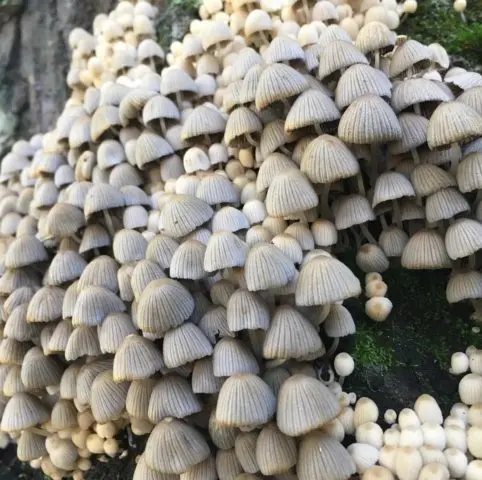
Where does the scattered dung beetle grow
The scattered dung beetles got their name from their habitat. Their other name is Coprinellus disseminates. They grow not only on dunghills, they can be seen as a large gray spot:
- on rotting birch or aspen wood;
- near decaying stumps;
- on rotten, half-decomposed foliage;
- near the old wooden buildings.
They turn dead plants into organic compounds, that is, they are saprotrophs, they settle in whole colonies, justifying their name “scattered”, they do not grow alone. There are clusters in which several hundred fruiting bodies can be counted. They form real necklaces at the foot of an old tree or stump. They live very little, for 3 days, then turn black, die off and quickly decompose. In the absence of the necessary moisture, they dry out. In their place grows a new generation of scattered dung beetle. Sometimes you can find several generations of these saprotrophs in one place. The first mushrooms appear in early June and grow throughout the summer period. In the rainy season, they come across in October.
What does the scattered dung beetle look like
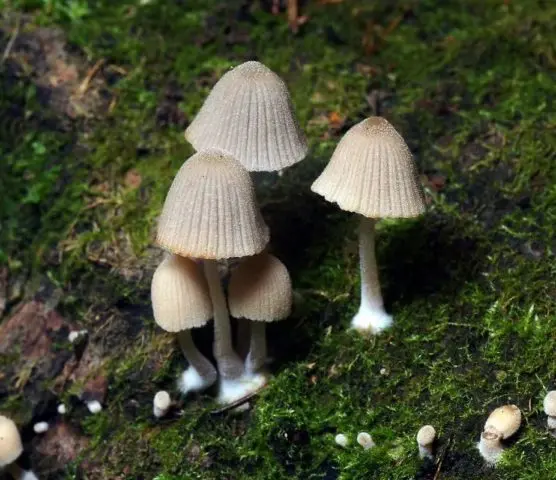
This is the smallest mushroom of the Psatirellaceae family. Their height reaches up to 3 cm, and the diameter of the hat, which is shaped like an egg at an early age, and then a bell, is 0,5 – 1,5 cm. The hat is ribbed, wrinkled, cracking at the edges, with a fleecy, granular surface. The grooves run from the center to the edges. Its color is light cream (at a young age), pale ocher, gray with a pale or bluish tint. At the top there are dark brown or yellowish spots. The plates, at first light, tender, become dark over time, and, rotting, turn into an ink mass.
The leg is hollow, thin, translucent, there are thickenings at the base. The color of the stem and cap often coincides and merges into a single whole. Spores black or brown. This is a very fragile mushroom, crumbles quickly.
Is it possible to eat scattered dung beetle
According to mycologists, these are fairly harmless mushrooms. But they are considered inedible due to their small size. To collect the required amount for the preparation of any dish, you need to spend a lot of time. They have practically no pulp, which gives a certain taste, there is no pronounced smell. It is hardly possible to get poisoned by them: if they have poisonousness, it is only when consumed in very large doses, but when combined with alcohol, the fungus can cause food poisoning.
Similar species
The scattered dung beetle is quite difficult to confuse due to its meager size and the large colonies that they appear in. But it is sometimes difficult for inexperienced mushroom pickers to distinguish them from other mushrooms:
- Similar to them are small mycenae, for example, dairy ones. They have the same grayish or slightly bluish color. But the sizes of mycenae are slightly larger. The leg can reach a height of up to 9 cm. And they do not settle in colonies, but in small groups, there are also loners. Milk mycenae are edible, unlike some of their other relatives. Cases of poisoning by them are common.

- It can be confused with the folded dung beetle, which is also considered inedible due to its small size. But it is slightly taller and has a dark brown, sometimes brownish-gray color. The surface of the cap is without lint and grains. Settles in small groups and singly in fields, gardens, orchards and forest belts.

- Psatirella dwarf grows in the same large groups and settles on decaying trees. It is also found in temperate deciduous and mixed forests. The color is the same: light cream, beige. Both saprotrophs are small in size. The only difference is that her hat is not hairy, without grains, less ribbed and more open, more like an umbrella in shape.

- There is some similarity with negniyuchki, in particular, the most tender ones. But they are larger and do not settle in large groups. The hat of the most tender non-rotten reaches 7 cm.

Conclusion
Dung beetle is not eaten, there is no evidence of any beneficial properties. Although some professionals suggest that dung beetles are rich in antioxidants that prevent cell aging. Some species were previously used to make ink. The properties of the dung beetle are yet to be studied. But one thing is clear: it is a very useful organism of our ecological system of the planet.










